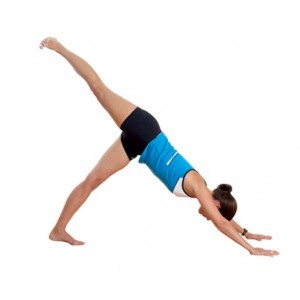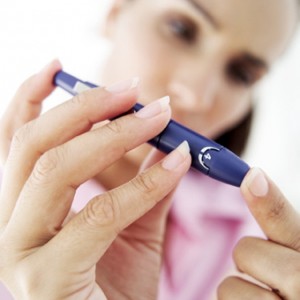If you have tight hamstrings (and what runner doesn’t?), the problem may have as much to do with the front of your legs as the back. Tight hip flexors can pull your pelvis forward, putting stress on the hamstrings and lower back. These muscles, which connect your back and hip to your femur bone, become especially inflexible after long periods of sitting. So if you have a desk job or a long commute, you’ll find this series of stretches—which targets the hip flexors and the hamstrings—especially beneficial. Do this routine after a run once your muscles are warm. Hold each pose for at least 30 seconds.
1. Dancer
Start in a classic quad stretch. Then, hinge forward, kicking your right foot back. Extend your left arm for balance.
Learn the 10 rules of injury prevention, and spend more time running and not in rehab.
2. Downward-Facing Dog with Leg Lift
From downward-facing dog, lift one leg. Lower. Repeat on the other side.
3. Flipped Dog
From downward dog, lift your right leg, and rotate upside down. Reach your right arm out. Flip back. Repeat lifting left leg.
Iron Yoga: For increased flexibility and strength, try weight training with your yoga routine.
4. Lunge with Side Stretch
From downward dog, bring your right foot between your hands and come to a lunge. Reach your left arm overhead.
5. Lunge with Quad Stretch
From a low lunge position (right knee on the ground), reach your right hand back and hold your foot.
Running on softer surfaces like grass and trails might help protect your body. Here are 5 safety tips for trail running.
6. Bow Pose
Lie face down. Bend your knees and bring your feet toward your glutes. Reach both arms back and grab hold of your feet.












